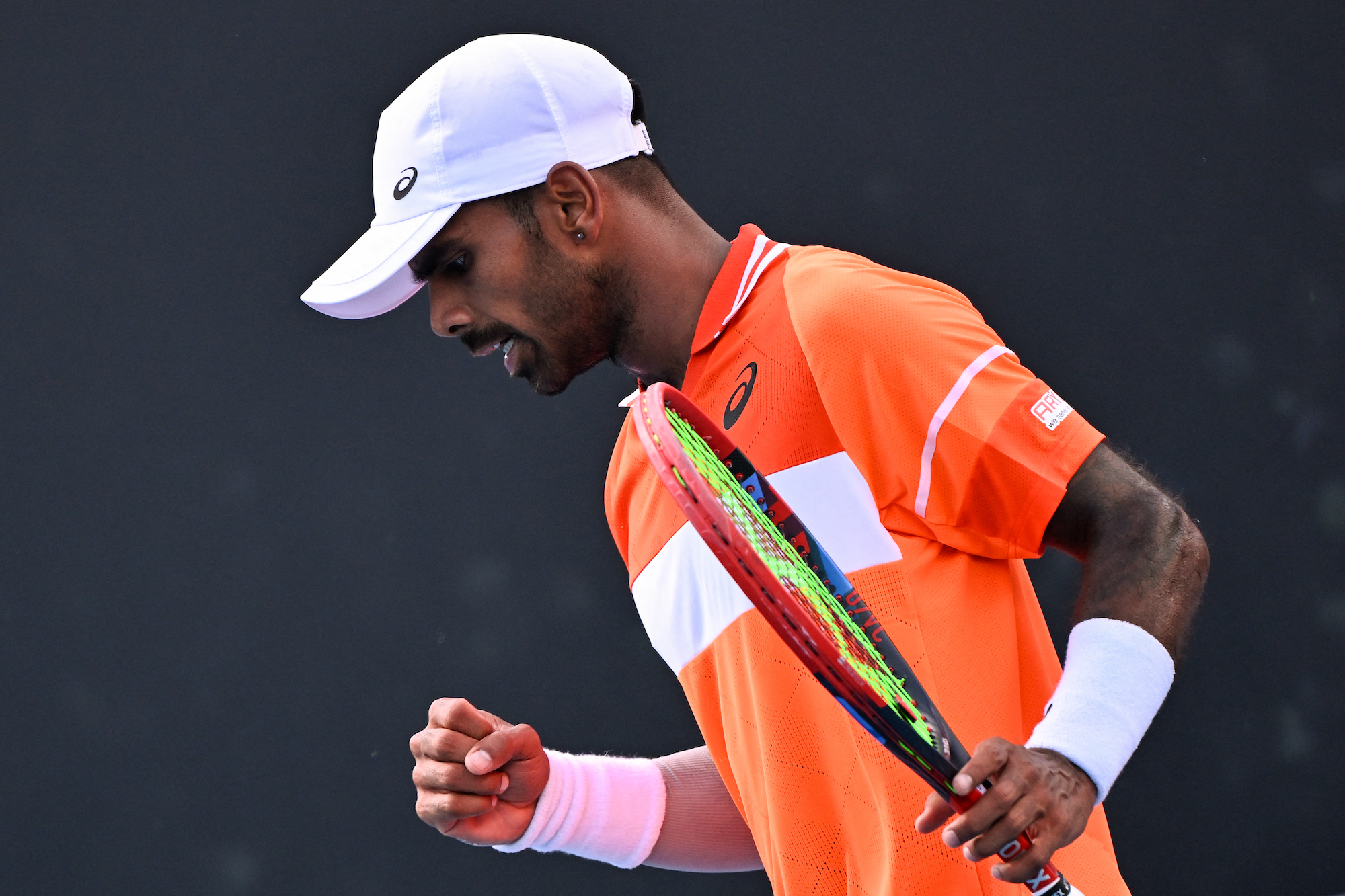This past September, Sumit Nagal, the top-ranked men's tennis player from India, went lightly viral by announcing how broke he was. The 26-year-old said he had 900 euros in his bank account, which was roughly the same amount he had at the start of the year. It wasn't for lack of talent. In his career, Nagal had qualified for three major tournaments—taking a set off Roger Federer on Arthur Ashe Stadium in 2019, winning a round at the U.S. Open in 2020—but at the time of his grim financial disclosure, he was recovering from a 2022 lost to hip surgery and two cases of COVID.
At the start of 2023, Nagal could no longer afford to train at his usual academy in Germany. Over the year, he broke even by slapping together his on-court prize money ($116,402) with some funding from an Indian oil company and a regional tennis federation. "I cannot say I live a very good life," he said, toward the end of what was ultimately a fruitful bounce-back season that saw him rise from No. 506 back up to No. 138, not far off his career high of No. 122. Good effort, but still not much of a living.
This year is off to a more auspicious start. On Tuesday at the Australian Open, Nagal became the first Indian man since Ramesh Krishnan in 1989 to defeat a seeded player at a major tournament. In his first-round match, he dispatched 31st-seeded Alexander Bublik, 6-4, 6-2, 7-5(5). Merely qualifying for the main draw, as Nagal did with three hard-fought matches last week, brought a $120,000 windfall; beating the always goofy and sometimes tanking Bublik juiced his payday by another $60,000. "Obviously, I'm not crying right now, but at the same time it hasn't completely sunk in," Nagal said after the win.
When I interviewed Nagal in 2020, the throughlines of his career were random chance, loneliness, and improvisation. Players born in tennis powerhouse nations often enjoy a robust state infrastructure for training, but Nagal effectively made things up as he went along, finding benefactors whenever they popped up. As a 10-year-old who showed up to a tennis tryout in Delhi on his father's urging, Nagal was going unnoticed, but he said he happened to walk up and grab the hand of Indian doubles great Mahesh Bhupathi, who has since become a mentor. Nagal trained for a while in Bangalore under the auspices of a tire company that pledged a billion rupees over a decade to produce a Grand Slam champ; the program's funding was cut after two years. With Bhupathi's help, Nagal next made his way to Canada, where, as a 13- or 14-year-old, he was exposed to the concept of "footwork" for the first time. Eventually he landed in Germany, which is still his training base today.
Nagal detailed the maddening challenges of pursuing a tennis career in India, including the lack of centralized training facility and the apathy of a cricket-mad country that doesn't grasp the magnitude of his achievements or register his future potential. (Nagal himself admitted to me that his favorite sport was cricket. While traveling, he said he'll walk up to people playing cricket and join in.) “People want you to get medals and all every year, every time you play something, they want you to win the Slam, or they want you to get an Olympic gold medal," he told me. "But they don't realize it just doesn't happen like this, you know? Just pop up, say ‘Hey, Sumit, here's a medal for you.’”
Despite being, by a large margin, the best singles tennis prospect in a nation of 1.4 billion, Nagal couldn't finance his career. "I felt when my ranking dropped after injury, no one wanted to help me, no one really believed that I could be back. That was disappointing because I feel whatever I do is not enough," Nagal told The Times of India in September. "It's so hard to find financial support in India. To be honest I do not know what to do, I have given up." Back in 2020, Nagal estimated that he needed about 220,000 euros a year to cover his travel and coaching; prize money alone doesn't come close to covering that, as he's made just $733,703 in his career over eight seasons.
Nagal will cover a good chunk of his annual budget solely with his wins in Melbourne over the last week. Reaching the first round alone was momentous: In his final match of qualifying on Friday, he took a medical timeout for treatment on his abdominal muscles, and looked like he could barely rotate his torso in the final points. By the time he suited up against Bublik, however, Nagal appeared restored and ready to scrap. A short, smooth mover who prefers clay courts and lives to run around his forehand, Nagal said he modeled his game after the ur-scrapper David Ferrer. ("He actually does a really good job, especially on the inside-out, how he gets around. That was impressive," Roger Federer said after his briefly exciting 2019 clash with Nagal in New York.)
Nagal's primary challenge with Bublik would be putting some serves back into play. Bublik approximates a fire-sale Nick Kyrgios, sharing his fast serves, ostentatious touch shots, and visible distaste for professional tennis. Over the last year Bublik has hit aces on 15 percent of his service points, the second-highest rate on tour, per Tennis Abstract. Nagal bucked the trend by breaking serve in his first three return games—aided by Bublik's sloppiness—and then stayed consistent, creating the ideal environmental conditions for the inevitable mental collapse. When Bublik was underarm serving and smashing his racquet while down big in the second set, much of the hard work had already been done, but Nagal still had to hold his nerve all the way through the third-set tiebreak. After two hours and 37 minutes, Bublik banged his 13th double fault of the day and Nagal roared in triumph.
“I knew the conditions were going to be tough and hot. No big server likes to serve in the wind, so I knew if I was going to return serves, it would annoy him. That's what I did, and it worked," Nagal said after the match. "The first two sets were not the way he probably wanted. It's tennis; sometimes you feel the ball, and sometimes you don't. Today, I kept calm and played probably one of my best tennis matches so far."
Nagal's second-round match Wednesday night (scheduled for 9:30 ET) is a winnable one, against another man from a hugely populous country with a proportionately underwhelming men's tennis program. Juncheng "Jerry" Shang is a significant talent who could be seeded at this tournament someday, but right now he's just 18 years old, ranked a few slots below Nagal, and the only obstacle barring the Indian from another $75,000.






